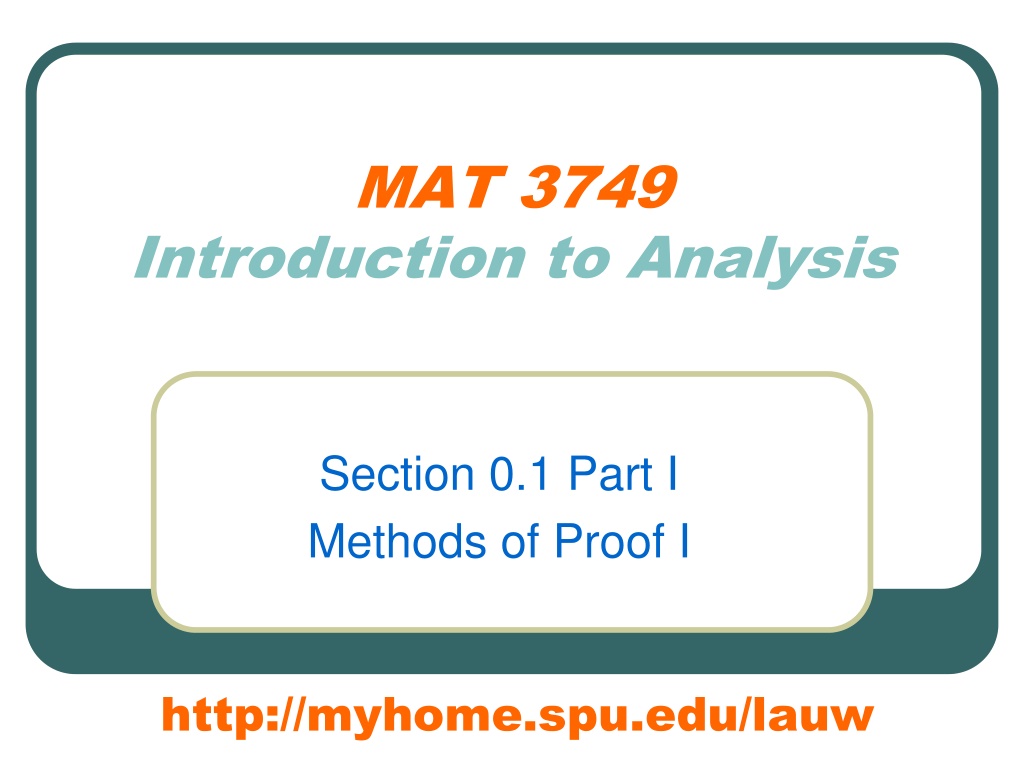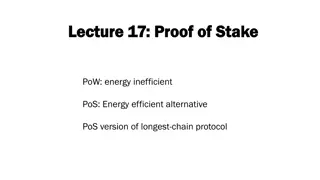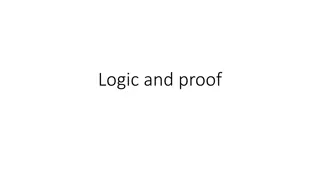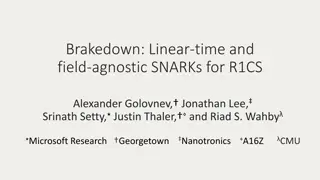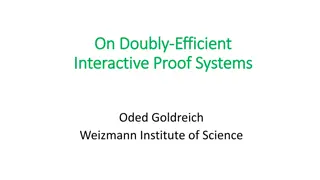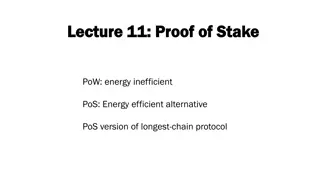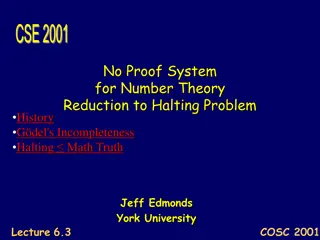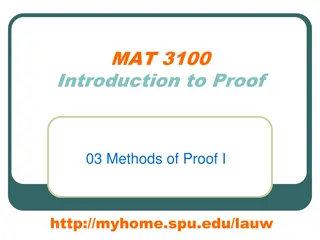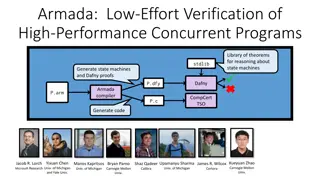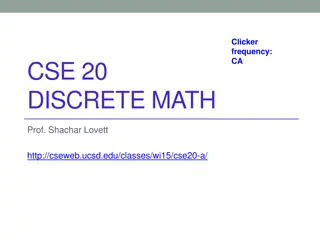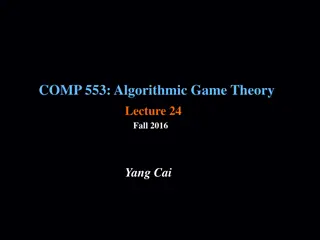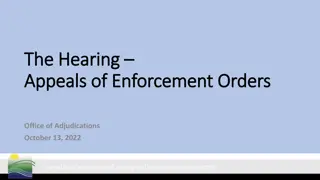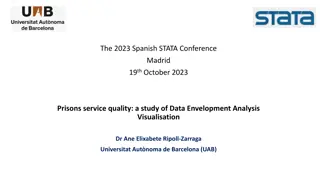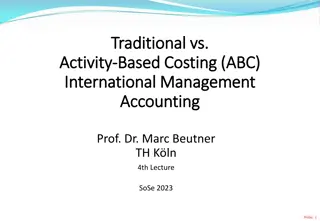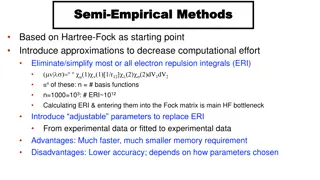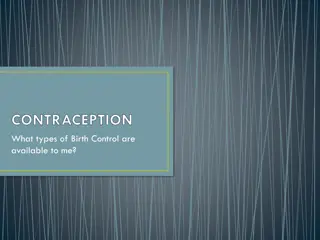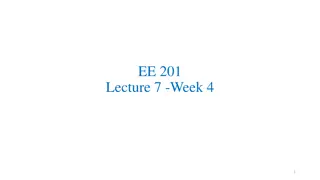Introduction to Analysis Methods of Proof
This content introduces various methods of proof in analysis, including direct proof, counterexamples, and indirect proofs like contrapositive. It covers common notations, sets, symbols, implications, theorems, and examples with analyses. The goal is to understand how to prove or disprove theorems using different techniques.
Download Presentation

Please find below an Image/Link to download the presentation.
The content on the website is provided AS IS for your information and personal use only. It may not be sold, licensed, or shared on other websites without obtaining consent from the author. Download presentation by click this link. If you encounter any issues during the download, it is possible that the publisher has removed the file from their server.
E N D
Presentation Transcript
MAT 3749 Introduction to Analysis Section 0.1 Part I Methods of Proof I http://myhome.spu.edu/lauw
Preview of Reviews Set up common notations. Direct Proof Counterexamples Indirect Proofs - Contrapositive
Background: Common Symbols and Set Notations Integers This is an example of a Set: a collection of distinct unordered objects. Members of a set are called elements. 2,3 are elements of , we use the notations 2 , 3 2,3 = { , 3, 2, 1,0,1,2,3, }
Background: Common Symbols Implication Example = + = If x 2 then 2 3 5 x x + = ( ) ( ) = 3 5 x
Goals We will look at how to prove or disprove Theorems of the following type: If ( ), then ( ). statements statements Direct Proofs Indirect proofs
Theorems Example: 2 If is odd, then m is also odd. m
Theorems Example: 2 If is odd, then m is also odd. m Conclusion Hypothesis m Underlying assumption:
Example 1 2 If is odd, then m is also odd. m Analysis Proof
Note Keep your analysis for your HW Do not type or submit the analysis
Direct Proof 2 If is odd, then m is also odd. m Direct Proof of If-then Theorem Restate the hypothesis of the result. Restate the conclusion of the result. Unravel the definitions, working forward from the beginning of the proof and backward from the end of the proof. Figure out what you know and what you need. Try to forge a link between the two halves of your argument.
Example 2 m n + If is odd and is even, then m is odd. n Analysis proof
Counterexamples To disprove ( ) x P x we simply need to find one number x in the domain of discourse that makes false. Such a value of x is called a counterexample ( ) P x
Example 3 + n N , 2 1 is prime n Analysis The statement is false
Example 4 + If 3 2 is odd, then is also odd. n n
Indirect Proof: Contrapositive To prove + If 3 2 is odd, then is also odd. n n we can prove the equivalent statement in contrapositive form: n+ If is n odd, then 3 not 2 is no t od d. or n+ If is n even , th en 3 2 is en. ev
Rationale Why? + If 3 If is n 2 is odd, then is also odd. odd, then 3 not n n n+ 2 is no t od d.
Background: Negation Statement: n is odd Negation of the statement: n is not odd Or: n is even
Background: Negation Notations P: is odd ~P: is not odd n n Note: Some text use P
Contrapositive The contrapositive form of If then P Q is If ~ then ~ Q P
Example 4 + If 3 2 is odd, then is also odd. n n Analysis Proof: We prove the contrapositive: If is even, then 3 n n+ 2 is even.
Contrapositive + If 3 2 is odd, then is also odd. n n Analysis Proof by Contrapositive of If-then Theorem Restate the statement in its equivalent contrapositive form. Use direct proof on the contrapositive form. State the origin statement as the conclusion.
Classwork Very fun to do. Keep your voices down you do not want to spoil the fun for the other groups.
